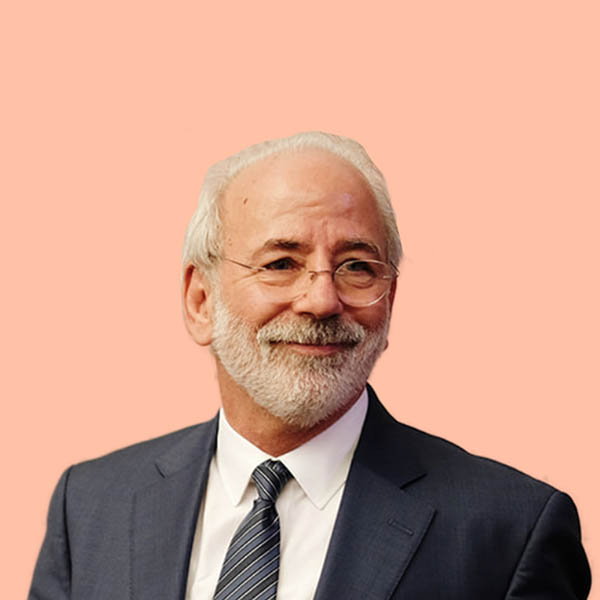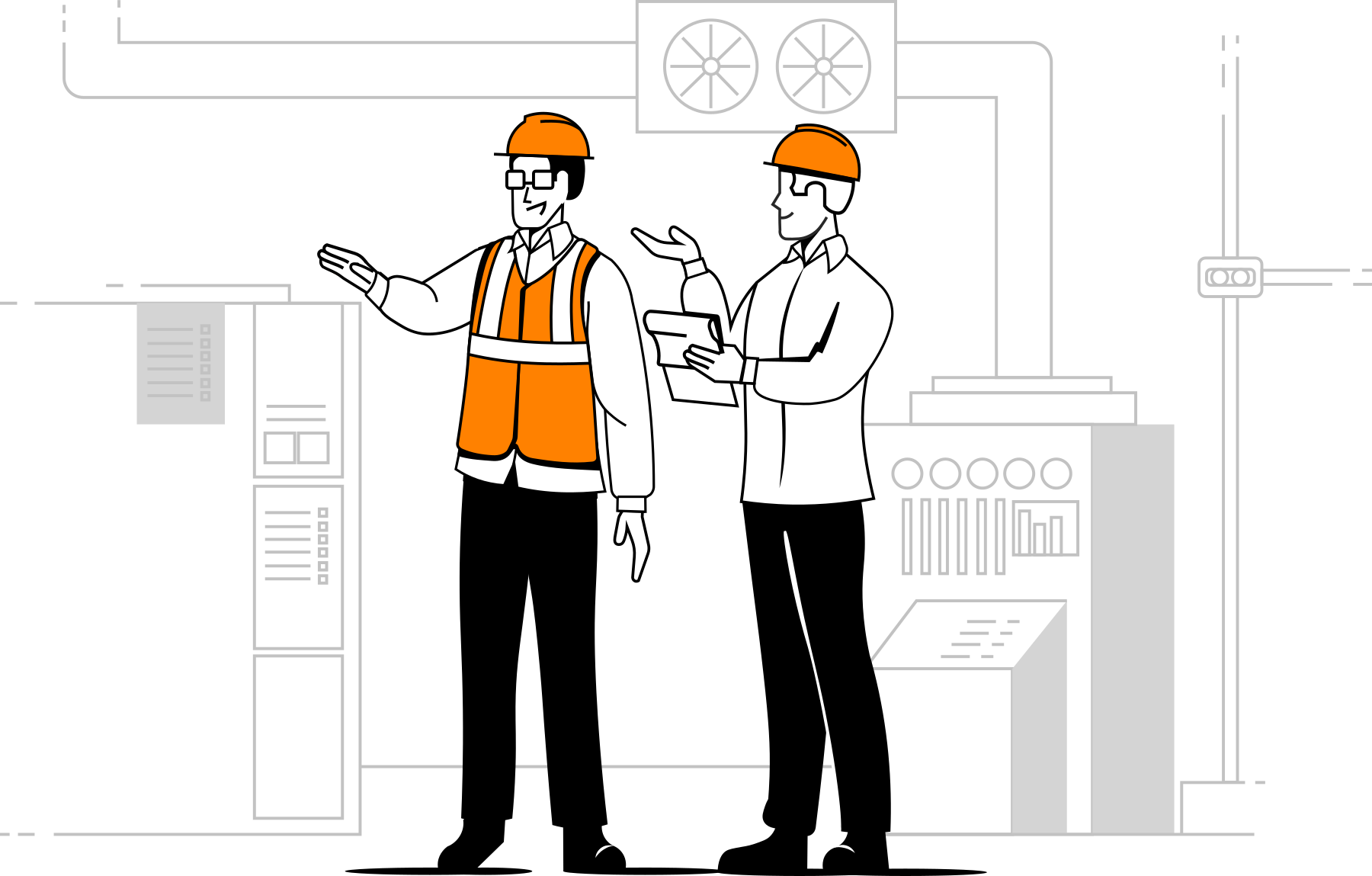Table of Contents
A Bit of Background – Bill
Challenges and Changes
A Bit of Background – Will
Target Audience
Hireway Origin
Hiring

Like superheroes, every great company has an origin story. We sat down with father and son duo Bill & Will Black to talk through the inspiration for Hireway and what the company is looking to achieve in the HR space.
Before we get into Hireway itself, can you all tell us what you were doing prior.

A Bit of Background – Bill
Q: Bill, we’ll start with you. Can you tell us a little bit about your career before Hireway… you’ve founded other companies but can we start even further back… what was your first real job?
My first real job was quite early on, helping my father in his bar and restaurant. I started by shelling shrimp and frying burgers. This early exposure to the family business taught me the value of hard work and customer service.
As a teenager, I worked in an iron foundry, which was a challenging but formative experience. During college, I took on various jobs to support myself, including working in the university cafeteria and driving an ice cream truck through West Philadelphia in the summers.
After college, I started as an accountant and soon founded my own accounting firm with my wife. We later expanded into payroll processing. In the early ’90s, an opportunity arose through a client in the staffing business, which led me into the human resources and staffing industry. We grew that business to 11 locations over seven years.
Q: What types of skills did you pick up? What led in the direction of human resources more broadly?
My accounting background gave me a solid foundation in business operations and financial management. This proved invaluable when I transitioned into the staffing industry, as I was able to efficiently build and run our back office operations.
My early experiences, from helping in my father’s business to working in various industries, led me to an important insight, that team chemistry is a universal ingredient to business success at any type of company. I saw how the right mix of people working well together could make or break an operation, whether it was a small family restaurant or a large industrial facility.
Challenges and Changes
Q: What are some of the challenges you saw in that arena in the early days? What’s the same? What has changed?
In the early days of my staffing career I observed a trend of companies reducing their internal HR departments, shifting more responsibilities to line managers. This trend has continued today and even accelerated in some sectors.
Another trend that has persisted is the constant challenge of balancing the pressure for quick placements against the need for quality, long-term fits. This remains a key issue in the industry today.
Interestingly, the fundamental value proposition in this field has remained largely unchanged through the years. Nevertheless, we still see a disconnect between what is promised by firms to secure a sale and what can realistically be delivered.
What has notably changed is the decrease of companies relying on temporary staffing firms as a long-term strategy. This shift reflects evolving workforce dynamics and changing business models.
A Bit of Background – Will
Q: Will, what about you? You started off in other industries. What types of work were you doing before you embarked on Hireway?
Before embarking on the Hireway journey, I moved to New York City in 2016 and began working as a management consultant for a firm specializing in retail banking. Over the years, I advanced from an analyst to an engagement manager, becoming proficient in SQL and Excel modeling, storytelling, leadership, and structured thinking. My career highlight was managing one of four workstreams during the largest bank merger since the 2008 financial crisis. I led the integration of the two banks’ marketing organizations and developed a customer acquisition strategy that saved the banks tens of millions in lost deposits from merger disruption, building significant momentum for the new brand launch.
Q: What types of skills did you pick up?
My journey in management consulting and product management allowed me to acquire a diverse skill set. As a consultant, I became an expert in SQL and Excel modeling, which are essential for data analysis and strategic decision-making. I also honed my storytelling skills, enabling me to convey complex ideas in a compelling and understandable way. Leadership and structured thinking were crucial as I rose to an engagement manager role, managing teams and projects effectively.
In my role as a strategic product manager, I learned a great deal about product development and customer-centered design. I led the development and market introduction of the first cross-industry marketing mix model, enabling top consumer banks to measure their marketing contributions to customer acquisition and engagement efforts. This experience taught me the importance of resource distribution, roadmap management, and accountability, especially when presenting to senior leadership and investors.
You’ve been involved in transformation projects for some quite large firms. Can you tell us a little bit about the transformations that firms can experience when they find the right software?
I’ve seen firsthand how crucial software implementation and having valuable information and insights at every level of decision-making can be for companies both big and small. Any repeatable business process can benefit from what I call the ‘deployment-analysis-optimization flywheel’ – a continuous cycle of improvement driven by solid data.
In my experience, the companies that excel at customer acquisition are those that have embraced a data-informed strategy. They don’t just rely on gut feelings or outdated methods; instead, they’re constantly monitoring and fine-tuning their processes, backed by accurate insights and robust technology. Being exposed to high-level strategic decision-making early in my career was eye-opening and shaped my approach to building Hireway.
Q: Eventually, you all started incubating a new business idea together…tell us about the moment when that possibility came to life…what was the spark?
Starting a business has always been a goal of mine, inspired by watching my dad build his own ventures. The pandemic became an unexpected catalyst. While spending more time together, we witnessed firsthand how social distancing and remote work were reshaping industries.
During this period, we developed more robust internal software for our account managers to remotely onboard candidates for clients. This cloud-based solution adapted seamlessly to the new normal, and its success was truly eye-opening. It streamlined our processes and boosted efficiency significantly.
This internal win sparked a bigger idea. We began envisioning a full-fledged, online version of this software, accessible to business owners and hiring managers nationwide. We realized we could address hiring challenges for a much broader customer base by creating a platform that facilitates better employer-candidate matches.
This shared vision, coupled with the proven success of our initial efforts, led us to incubate and develop Hireway. Our aim? To transform the HR space with innovative solutions.
Target Audience
Q: In the early days, what types of people did you think the solution you were contemplating building could help?
From the outset, we envisioned Hireway as a solution for anyone hiring in the US today. We initially zeroed in on hiring managers and HR professionals in high-turnover sectors like manufacturing, retail, and healthcare. These folks often grapple with finding the right fit for open positions and face hefty costs from bad hires and constant churn.
We also had small and medium-sized business owners in mind – those without dedicated HR teams but still needing robust hiring solutions. For them, our platform could offer the tools to streamline hiring and boost their odds of landing the right candidates.
On the flip side, we wanted to support job seekers who often feel swamped by traditional hiring processes. By creating a more transparent and supportive onboarding experience, we aimed to cut down on the stress and uncertainty many applicants face. The end goal? Better job satisfaction and improved retention.
Ultimately, we envisioned a solution that would benefit both sides of the hiring equation – employers and job seekers alike – by facilitating better matches and boosting overall workplace efficiency. It was about creating a win-win scenario in the often challenging world of hiring and recruitment.
Q: With widespread adoption, what type of change could occur in the industry?
We really wanted to be able to help both employers and employees find “great fit” relationships. The traditional interview process can’t possibly determine that until work starts.
And then many firms that hired a “sort of” fit don’t have internal bandwidth to provide the training that both parties want.
What we really want to see is more long term relationships and less positions filled only to be vacated again within weeks.
We’ve spent a lot of time thinking about how widespread use of Hireway could change the HR and hiring landscape. While we can’t predict everything, we see some exciting possibilities.
We’re aiming to make hiring smarter and more insightful. By using data-driven approaches, we want to help create better fit between employers and job seekers. This could lead to less turnover and better retention, but we know there’s more to it than just the hiring process.
Q: What are some specific examples?
There’s the first principles question around the standard interview. They’re useful, but they don’t always show the full picture. That’s why we’re enabling a trial-based approach. It lets both sides get a real feel for the work before making a big commitment. It might not work the same way for every industry, but we think it has a lot of potential.
For people looking for jobs, we want to make things clearer and more supportive. Making job expectations more transparent and onboarding smoother takes some of the stress out of job hunting. We know job satisfaction is complicated, but our approach can help significantly.
As we solve the more obvious challenges in the industry, we’re really interested in what the next set of challenges to overcome might be…how all of this might change the way employers and employees work together.
Could it lead to more flexible work setups? Might it change how companies plan their workforce? These are the kind of questions that keep us excited about what we’re doing.
In the end, we see Hireway as part of a bigger conversation about the future of work. We’re always learning, both from our customers and other experts in the field.
Hireway Origin
Q: How did you all land on the name Hireway?
Software is often “sold” based on economic analysis. Do this XX% faster or lower your YY costs by ZZ% but if the problems it solves are really big enough, there’s quite a bit more to it… Let’s talk about the hiring side first. Who should consider adopting Hireway?
At its core, Hireway is an HR solution focused on the earliest days of an employment relationship, so certainly people that have “Human Resource” in their title will be excited about what we’re doing but there are lots of leaders with hiring responsibility on top of day to day running of the business.
So CEOs all the way down operations, finance, and facilities managers will be excited.
The name is all Dad/Bill. He does a lot of driving so my guess is highway for hiring = Hireway.
Hiring
Q: For that side of the equation, how do people feel about hiring in general? Are they excited about it?
Unfortunately, for many firms, it’s an emotional rollercoaster. They extend an offer with a great deal of excitement and then quickly that feeling turns to concern and even distress when they realize they may have a bad fit at the company.
Then this period of head scratching about how to solve the problem happens. A bad fit is no good for the employee, but does the company have the time to provide the training? Can other team members carry the load without resenting management?
It’s no fun and all too common.
Q: For the CFO in all of us, what are the economic results of a sub-optimal approach to hiring?
We work with manufacturing and distribution companies. A bad fit hire can literally bring an assembly to a halt so that’s lost productivity on a particular day.
For firms that keep bad fits on the team without a plan to help them become productive and enjoy their work, it can create a really toxic work environment where employees that used to be great contributors may not enjoy their work and even seek employment elsewhere.
Within a single firm, the annualized losses can be in the millions of dollars. Spread that across those industries and there might be well over a billion in annual losses due to hiring challenges.
Q: What about for employees? What’s it like emotionally to apply to a new job?
Job seeking and the whole interview process is really stressful for everyone. You feel like you’re being examined.
Most employees feel a sense of relief when they get a job offer, but most that have a bit of experience also carry some anxiety forward into this period as well.
The interview process theoretically gives employees the ability to interview the firm and hopefully get a feel for what it’s like to really work there, but they really don’t know what they’re getting either.
Employees that want to build a career definitely feel like they’re still being scrutinized when they start a job. They also just have that general social anxiety of wanting to be accepted and respected as the new person coming into a situation.
Q: So how does Hireway work and how is it different from the old way of an employee and employer building a relationship?
Great question and we’re really excited about this. So from our perspective, both companies and employees want a great fit, long-term relationship but neither party really has the expertise and bandwidth to ensure that happens.
So Hireway steps in as a safety net, mentor, and guide for both parties. When a company adopts Hireway as part of their hiring process, we actually hire the employee directly and help them fill skills gaps and maximize their readiness for that particular position. The employee is still physically working at the company, but we’re working with at the same time to smooth out any rough edges.
The employee gets compensated just like they will when they graduate from our program, but they have us on their side to coach them through the early days. They can ask us anything they want in a safe environment without having to suffer the embarrassment of having to bring up a lack of knowledge with their new boss or teammates: skills, work etiquette, compensation, and more are fair game.
And this helps us improve employer communication as well. We eliminate points of confusion, let them know if they’re job descriptions need a little tweaking, and more.
The result of implementing Hireway as a platform is what we were actually delivering as a service before we started work on the software and branded it.
We fill in the missing training and acclimation layer for company and employee.
Q: So for a company that wants more positions filled with great fit employees, how do they get started?
It all starts with a needs assessment. We meet individually with every company that wants us to help them create great fit employment relationships, and we don’t accept all businesses.
For those we accept, we set up the firm’s profile and open positions and train them up on how to invite promising candidates into their Hireway program.
Q: What about potential employees?
When you see Hireway mentioned on a job description, you know you’re applying to a firm that cares about creating and maintaining a fantastic work environment for everyone.
You’ll still meet with hiring managers for interviews, and then if they like how you present yourself, you’ll simply accept the invite to Hireway and get your payment and benefits packages started. The app and our team guide you through your training and stand by you throughout the whole process.
And then you graduate…we’ve built the skills and filled in the knowledge gaps and it’s happy career-building from there on. Employees move off our payroll on that of the company and go on to create great careers.
Q: So what’s next?
We’re so excited about what we can already offer, but we’re also just getting started. We’ll be helping more industries and adding additional capabilities.
If you haven’t already, subscribe to our newsletter to stay in the know on what we’re up to.

